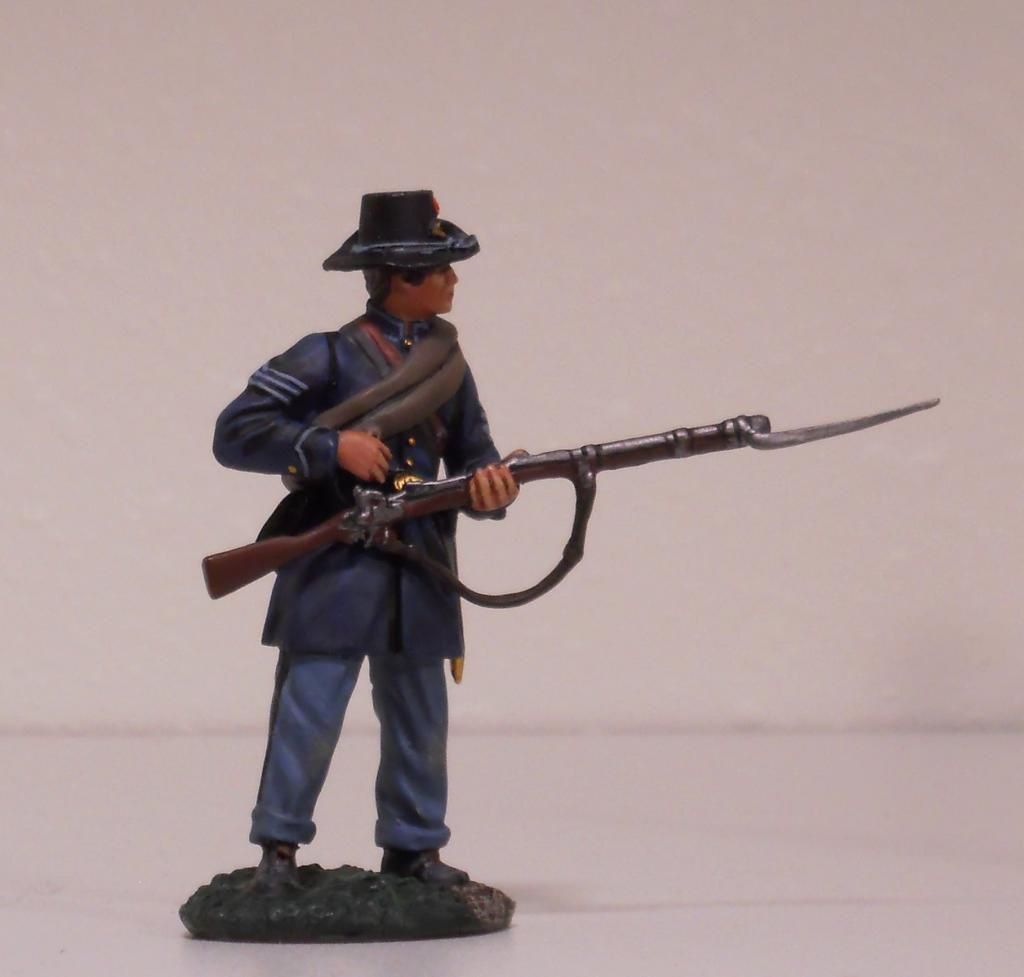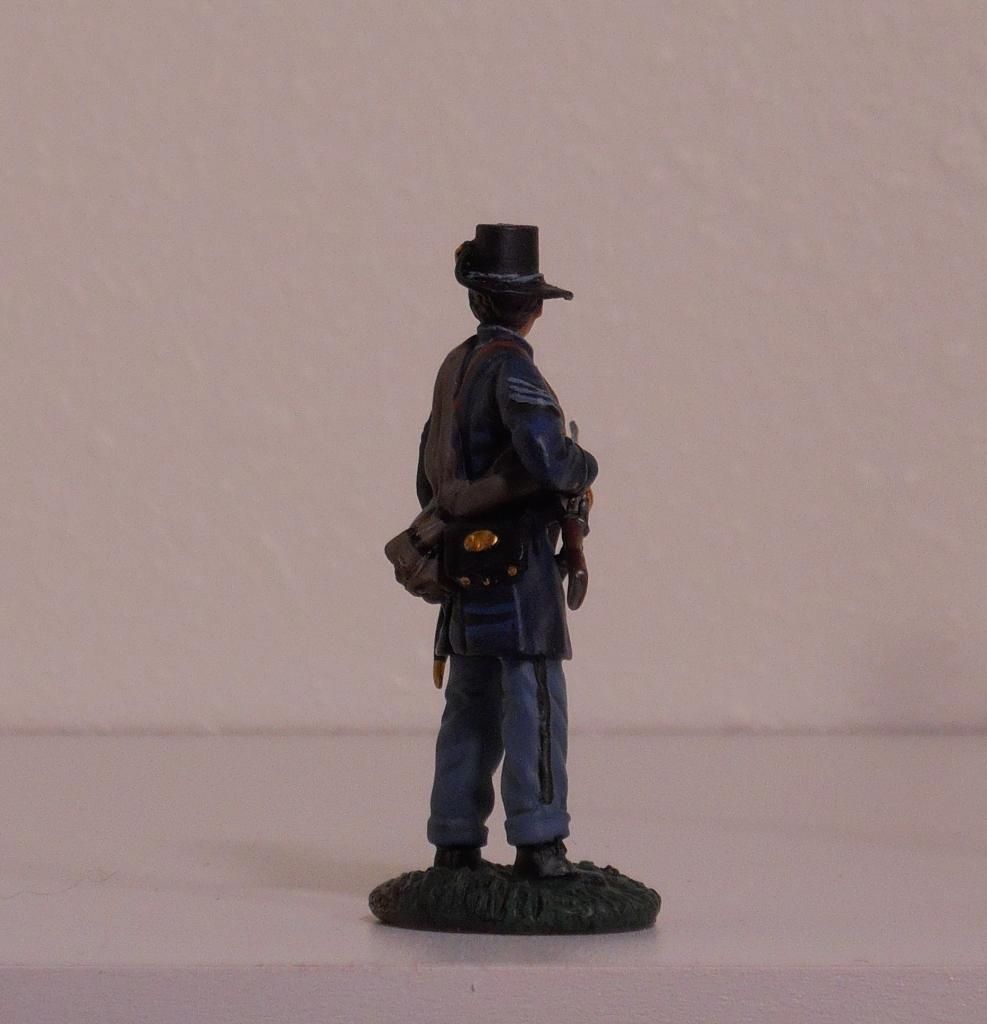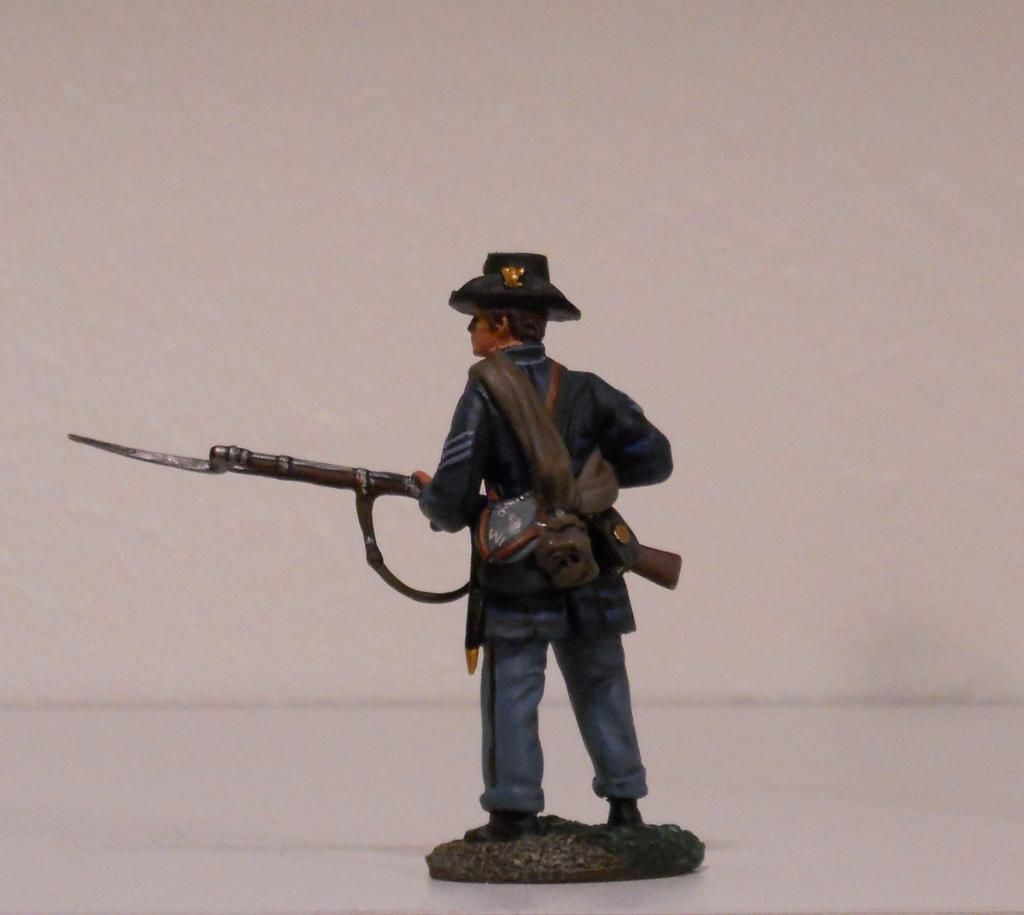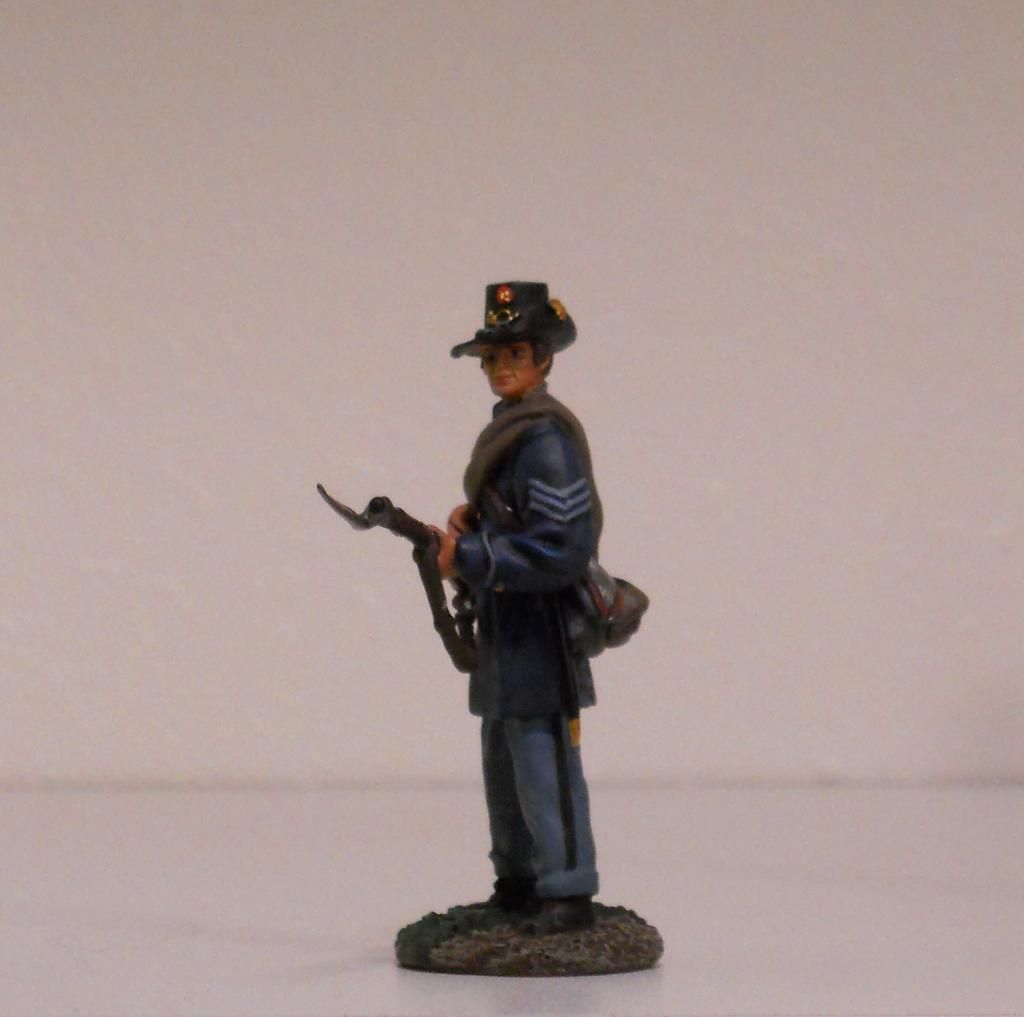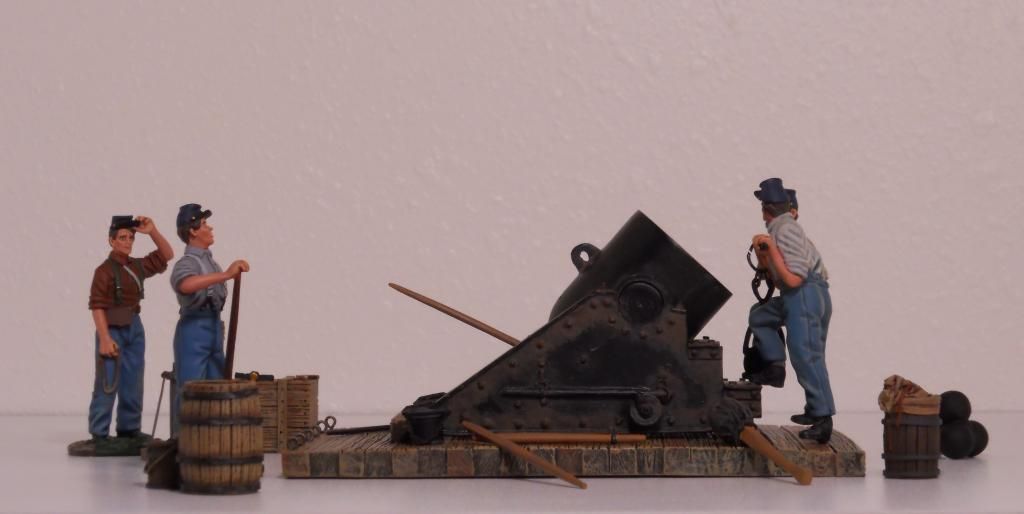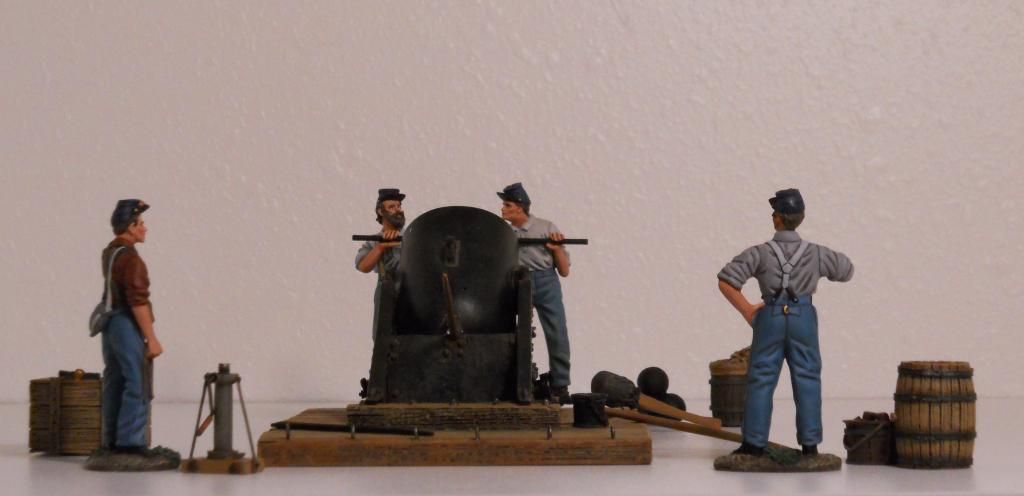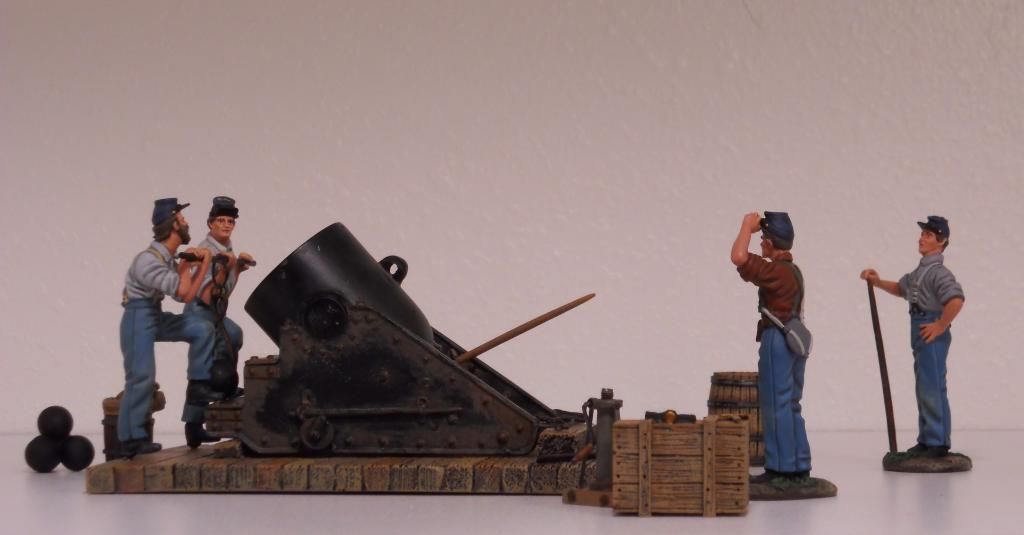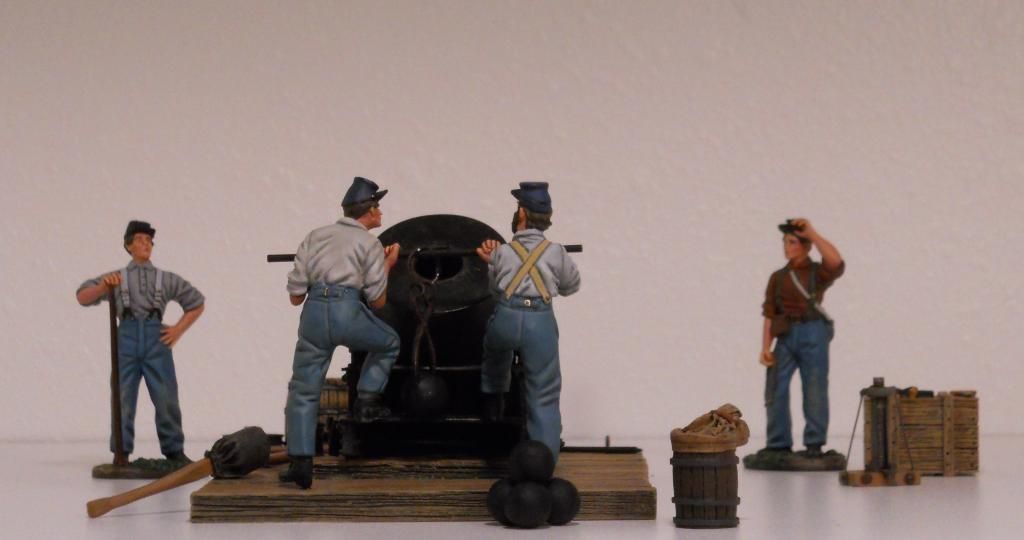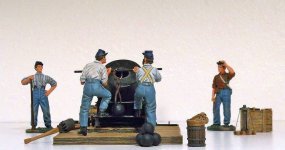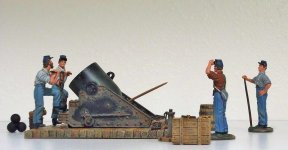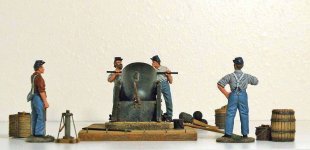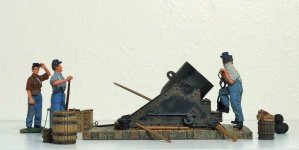mestell
Colonel
- Joined
- Feb 12, 2008
- Messages
- 8,152
I returned late yesterday afternoon from attending the 2014 W. Britain Model Soldier Symposium held this past weekend at Gettysburg, Pennsylvania. It was a wonderful weekend and a great event. I am really glad I decided to attend. Friday evening started with a "meet and greet" at three different minature toy soldier shops; "For the Historian", "The Antiques Center of Gettysburg", and "Gettysburg Miniature Soldiers". Treats were provided at the stores, as well as generous discount offers of all W. Britain purchases. It was a great way to initially meet some of the Symposium participants, Ken & Ericka Osen and the WB staff. It was also a good way to walk through town and enjoy the historic buildings that witnessed the battle 151 years ago.
Saturday was really the "meat & potatoes" of the Symposium. Scheduled were four guest lecturers with four great topics concerning issues that impacted both armies during the battle. First was "19th Centruy Agriculture Lanscape and Its impact on the Army by Rick Musselman which explained how the crops (wheat, corn, peach trees), various types of fences, the types of roads, and wood lots impacted troop/artillery movement, supply movement, and fields of fire. Next was "By Squad, Company, Regiment & Brigade: How the Armies Moved" by Patrick Craddock. I found this to be very interesting . . . . the movement of large masses of troops during the battle and commuications between commanders had to have been difficult at best. The third subject was "Civil War Artillery & Gettysburg" presented by Charles Tarbox. Mr. Tarbox was both very knowledgeable and humerous at the same time. He explained the different artillery pieces used by both sides and the type of shells they each used, as well as placement of artillery pieces and their limbers during the battle. I found his review of the use of land topography to faciltate the "skipping" of solid shot and canister to be very interesting. The use of canister iron balls in smooth bore (Napolean) guns vs soft lead ball canister in rifled guns was alos very informative. Lastly was "Faces of the Iron Brigade" by Kevin Hampton of the Wisconsin Veteran's Museum. Kevin prepared a slide presentation of individual soldier photos, personal letters, equipment and uniforms. All the slides shown were of items that are currently either on display or in storage at the museum. In between each presentation was a break complete with coffee, tea, water, soft drinks. A beautifully displayed and delicious buffet deli-style lunch was also provided with dessert and soft drinks. An outstanding day to say the least.
Also present during Saturday was a display of authentic US Marine Corps Uniforms and weapons from the late 18th century, through the 19th century and up to current day. This was presented by a contingent of Marines that were extremely knowledgeable in Marine Corps history and the transition of the Marine Corps uniform over time.
Saturday night was the Symposium banquet. The dinner was absolutely elligant and once again delicious. A bar was provided and each participant received two drink tickets . . . . . cash was also accepted beyond two drinks. Ken Osen was the after dinner speaker. He spoke about how he invisioned W. Britain going forward, how he considers their product to be Model Soldiers instead of toy soldiers. He explained the production process of the sets that are produced and how they are made purposely so that either individually or as a group, the figures and accessories tell a story. He also gave us a sneak preview of what's to come to some extent . . . . when questioned about certain future possibillities his eyes would twinkle and he would say that we would all be pleasantly surprised. After Ken's presentation, there was a drawing for door prizes and an effort was made to enusre that everyine received a prize.
Also in the conference room in which the Symposioum was held during Saturday, were numerous displays of figures both already released, future releases, and many pre-production masters. Ranges included ACW, WWI, AZW, Clash of Empires, Glossies. There were also a large selection of retail products available for purchase, as well as 56 items that were put up for bid on a silent auction. The proceeds of the silent auction went to various philanthropic charitable historic endeavors.
On Sunday was a three hour guided tour of the Gettysburg battlefield let by a licensed Park Service Battlefield Guide as well as Kevin Hamptom from the Wisconsin Veteran's Museum. A chartered bus was provided for our comfort. The tour involved the movement and positions of the Iron Brigade on the first day of the battle concentrating mainly on what happened in Herbst Woods, McPherson Ridge and the Railroad cut. Top notch . . . .
I want to thak Ken and Ericka Osen, the WB staff, the guest speakers, and the Wyndham Hotel and Conference Center for a great weekend.
Saturday was really the "meat & potatoes" of the Symposium. Scheduled were four guest lecturers with four great topics concerning issues that impacted both armies during the battle. First was "19th Centruy Agriculture Lanscape and Its impact on the Army by Rick Musselman which explained how the crops (wheat, corn, peach trees), various types of fences, the types of roads, and wood lots impacted troop/artillery movement, supply movement, and fields of fire. Next was "By Squad, Company, Regiment & Brigade: How the Armies Moved" by Patrick Craddock. I found this to be very interesting . . . . the movement of large masses of troops during the battle and commuications between commanders had to have been difficult at best. The third subject was "Civil War Artillery & Gettysburg" presented by Charles Tarbox. Mr. Tarbox was both very knowledgeable and humerous at the same time. He explained the different artillery pieces used by both sides and the type of shells they each used, as well as placement of artillery pieces and their limbers during the battle. I found his review of the use of land topography to faciltate the "skipping" of solid shot and canister to be very interesting. The use of canister iron balls in smooth bore (Napolean) guns vs soft lead ball canister in rifled guns was alos very informative. Lastly was "Faces of the Iron Brigade" by Kevin Hampton of the Wisconsin Veteran's Museum. Kevin prepared a slide presentation of individual soldier photos, personal letters, equipment and uniforms. All the slides shown were of items that are currently either on display or in storage at the museum. In between each presentation was a break complete with coffee, tea, water, soft drinks. A beautifully displayed and delicious buffet deli-style lunch was also provided with dessert and soft drinks. An outstanding day to say the least.
Also present during Saturday was a display of authentic US Marine Corps Uniforms and weapons from the late 18th century, through the 19th century and up to current day. This was presented by a contingent of Marines that were extremely knowledgeable in Marine Corps history and the transition of the Marine Corps uniform over time.
Saturday night was the Symposium banquet. The dinner was absolutely elligant and once again delicious. A bar was provided and each participant received two drink tickets . . . . . cash was also accepted beyond two drinks. Ken Osen was the after dinner speaker. He spoke about how he invisioned W. Britain going forward, how he considers their product to be Model Soldiers instead of toy soldiers. He explained the production process of the sets that are produced and how they are made purposely so that either individually or as a group, the figures and accessories tell a story. He also gave us a sneak preview of what's to come to some extent . . . . when questioned about certain future possibillities his eyes would twinkle and he would say that we would all be pleasantly surprised. After Ken's presentation, there was a drawing for door prizes and an effort was made to enusre that everyine received a prize.
Also in the conference room in which the Symposioum was held during Saturday, were numerous displays of figures both already released, future releases, and many pre-production masters. Ranges included ACW, WWI, AZW, Clash of Empires, Glossies. There were also a large selection of retail products available for purchase, as well as 56 items that were put up for bid on a silent auction. The proceeds of the silent auction went to various philanthropic charitable historic endeavors.
On Sunday was a three hour guided tour of the Gettysburg battlefield let by a licensed Park Service Battlefield Guide as well as Kevin Hamptom from the Wisconsin Veteran's Museum. A chartered bus was provided for our comfort. The tour involved the movement and positions of the Iron Brigade on the first day of the battle concentrating mainly on what happened in Herbst Woods, McPherson Ridge and the Railroad cut. Top notch . . . .
I want to thak Ken and Ericka Osen, the WB staff, the guest speakers, and the Wyndham Hotel and Conference Center for a great weekend.
Last edited:


